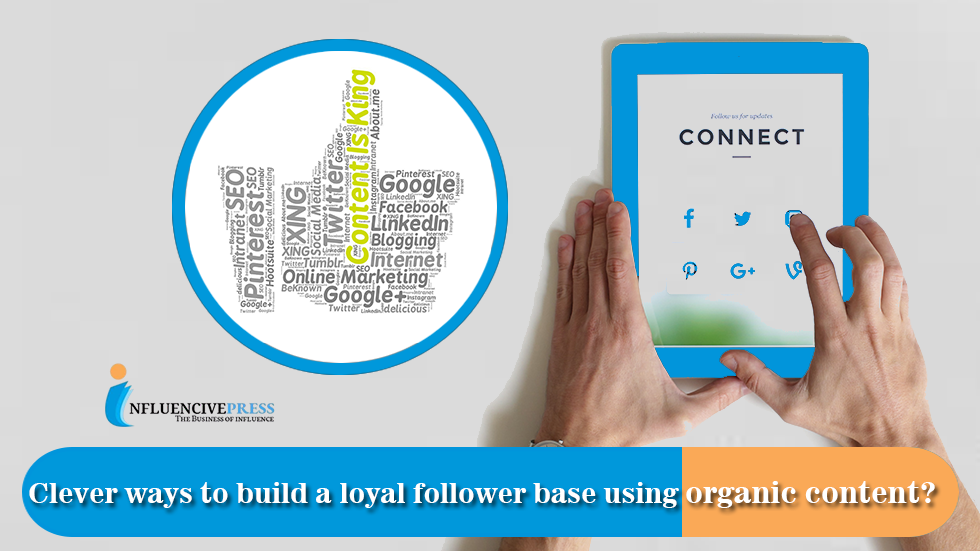Organic Content
Concerning advanced advertising, common isn’t better, yet it’s still really incredible. At the point when you stop by something fascinating naturally – for instance, another eatery suggested by a companion – you will, in general, feel pretty good toward it.
It is the objective of organic content: to carry individuals to your site by giving what they need instead of straightforwardly publicizing to them.
What is organic content?
At the beginning of social media, organizations just posted content organically. Rather than paying for promotions, brands would generally appear in individuals’ feeds. There was a substantial accentuation on making excellent quality content that clients enjoyed and keened on along these lines.
Be that as it may, as informal businesses have developed a lot throughout the long term, brands have lost their trust in organic content. One purpose behind this change is the expansion in rivalry, which can sometimes cause it to feel like everybody is battling to be heard through all the jabber, making organic content less viable. In any case, one of the key reasons why individuals accept organic content is dead is a result of social calculation changes.
Specifically, Facebook has presented and developed its News Feed calculation, boosting the scope of individual posts are lessening the span of brand content. Such changes are positive for clients, empowering them to observe the absolute best and most significant substance in their News Feed. Yet, for brands, the progressions have been testing – perceivability of their contents has diminished altogether, making it significantly harder to get heard amid all the commotion.
So what’s the purpose of organic content?
An organic content carries customer to your business naturally after some time. Rather than legitimately promoting your intended interest group, you’re attracting them by giving the data they’re looking to. This cycle is otherwise called inbound showcasing or content promoting.
There’s no most optimized plan of attack to results. Actualizing an organic content strategy won’t support your traffic overnight. Indeed, it can take months or years to see the sort of execution you’re searching for.
Whenever you have that presentation, notwithstanding, you have it forever. Effective organic content makes perpetual traffic sources to your site. These sources can be pages and blog entries discoverable through the hunt, unpaid visitor posts on online industry journals, web-based media refreshes connecting back to your site, and that’s only the tip of the iceberg.
For what reason should your business invest in organic content?
Regularly, social media feels like it is moving at a speed of 200mph, and in the frantic race to keep up, quality can suffer sometimes. It’s not simple to produce blog entries, webcasts, recordings, photos, introductions, whitepapers, and infographics all consistently. Be that as it may, while the amount can be significant via social media, this shouldn’t inconvenience quality. Quality content matters and will be the distinction between grabbing a customer’s eye and going unnoticed.
In case you’re just siphoning out low-quality content, individuals won’t stop to see it, navigate, or call. However, more critically – and what Vaynerchuk’s statement brings up – that if you support that low equivalent content with 100’s or even 1,000’s of dollars, customers actually won’t be intrigued. Henceforth, once in a while, returning to fundamentals and focusing on making great quality content, which will perform organically, can be the way into your online media achievements.
The most effective method to Use organic content on Social Media
Organic content marketing via online media is ideal for building your image.
If you consistently post effective content, you will draw in and develop your crowd. Each post is a resource that expands your image’s incentive according to your followers.
The confounding variable here is that the natural reach for brands via online media is declining consistently. Natural space on Facebook presently sits at 2% — or less, as indicated by Hubspot.
Organic reach is used to mean free publicizing for brands via online media. Notwithstanding, as every informal community has pushed toward paid promoting, calculations have changed in like manner.
Organic promoting arrives at existing followers, guarantees that your commitment methodology attempts to fortify your image picture, hold customers, and become your after from the inside.
Here are a few hints to boost your organic social media advertising:
1. Limit promotion and cultivate character/personality
Character is the thing that associates individuals with your item. Instead of adding flyers to your profile with lots of publicity, offer some benefit to expand informally and develop a personality. Facebook is the best spot to feature your image’s character.
2. Cover up or erase undesirable comments
A viable online media profile moves certainty. As indicated by Brightlocal, 88% of individuals trust online surveys from different purchasers as much as they trust suggestions from individual contacts. Advance commitment by introducing a smoothed out profile that builds positive recognition for your image.
3. Use hashtags to help your boosting across social networks
It makes a discussion around an ongoing theme and takes advantage of a current supposition. Here’s how to lead hashtag research for your image.
4. Adjust your organic content to the stage
Certain content types work best on specific stages/platforms. For instance, thought authority lives on Twitter. Instagram rewards the utilization of positive quotes, statements, and lovely pics. Facebook clients need the video; Facebook positions live video higher in the News Feed.
Utilize the networks’ local examination or tools like SumAll to figure out which substance type is ideal for your crowd. The following is a chart that shows activities that function admirably on all platforms.

